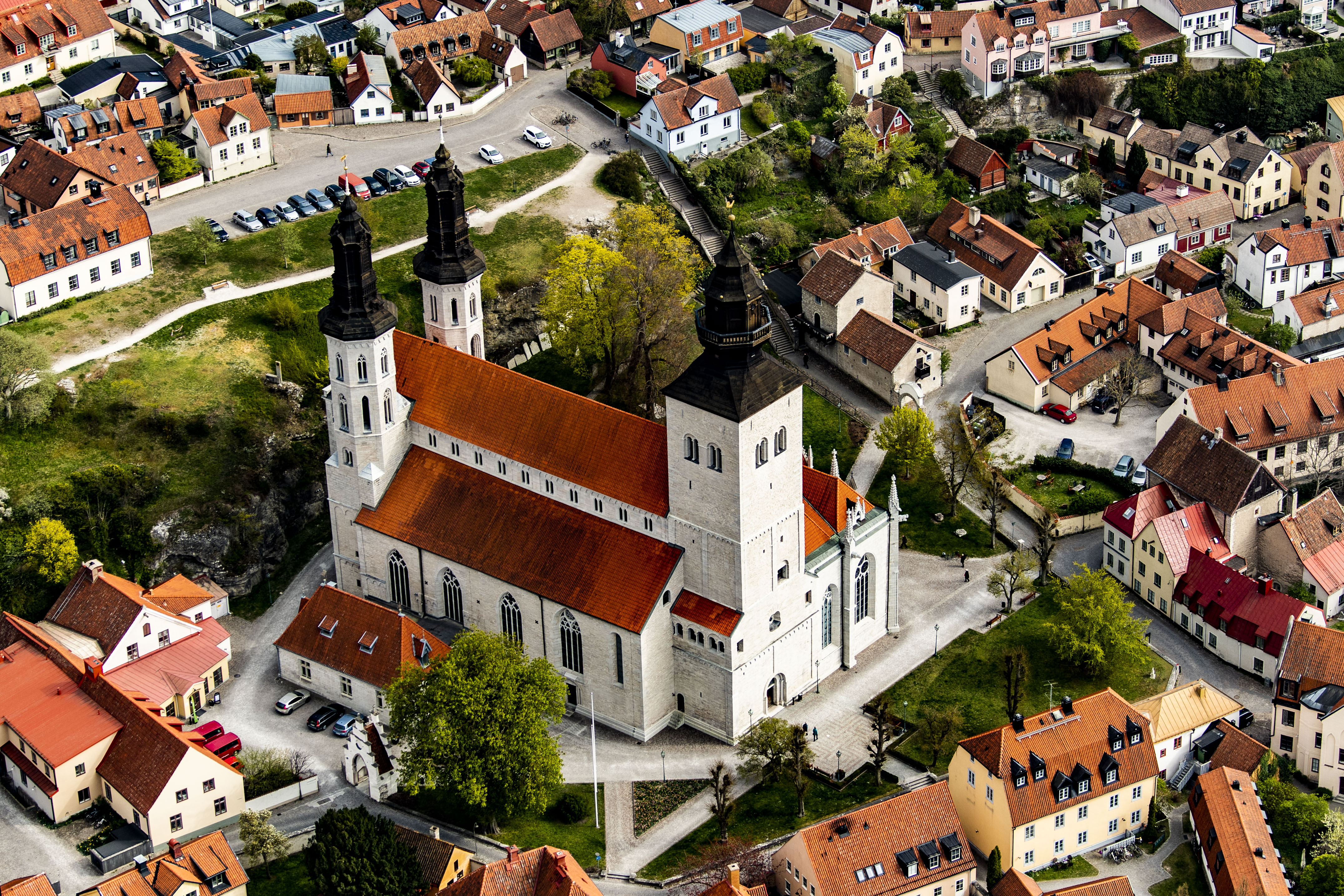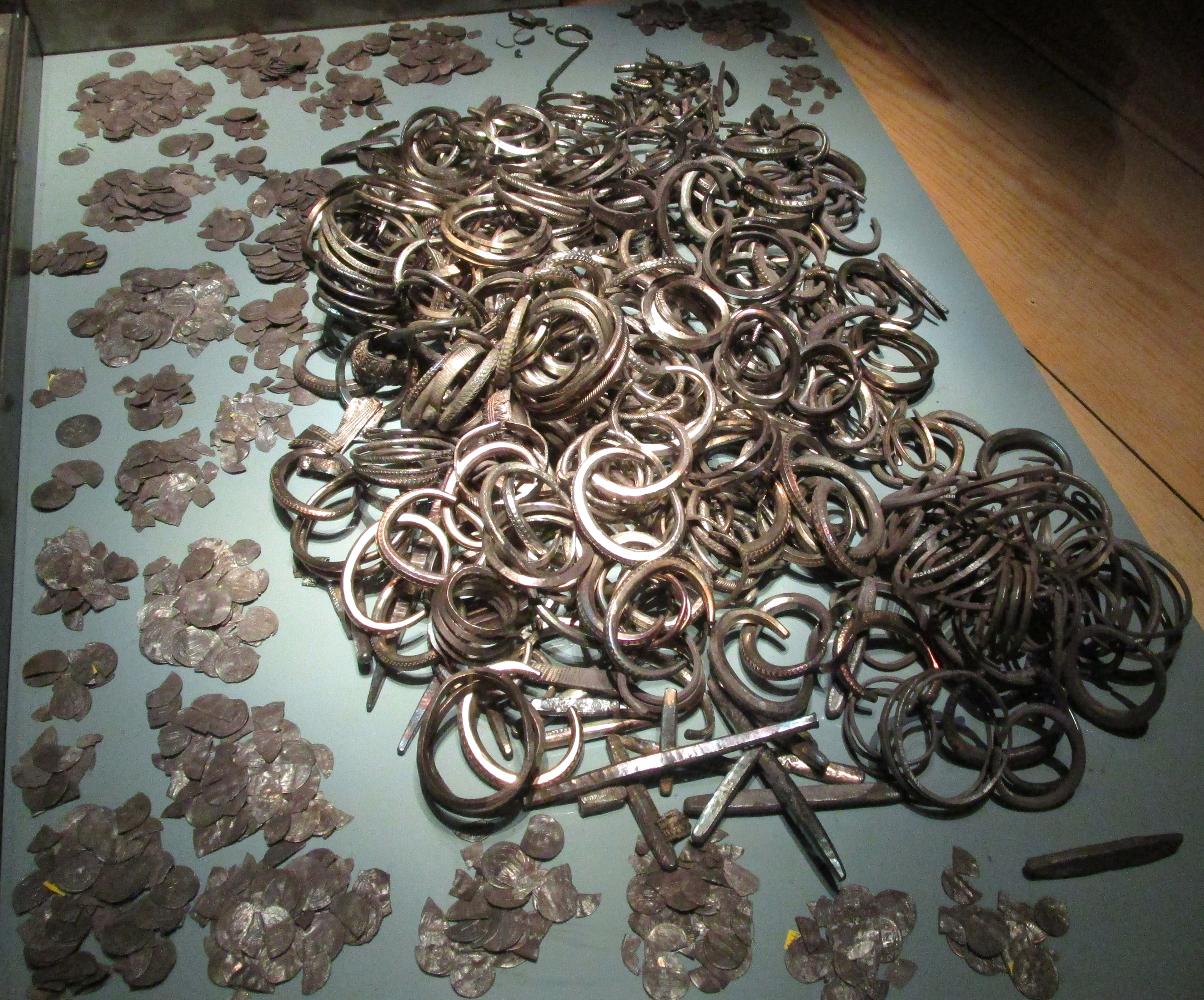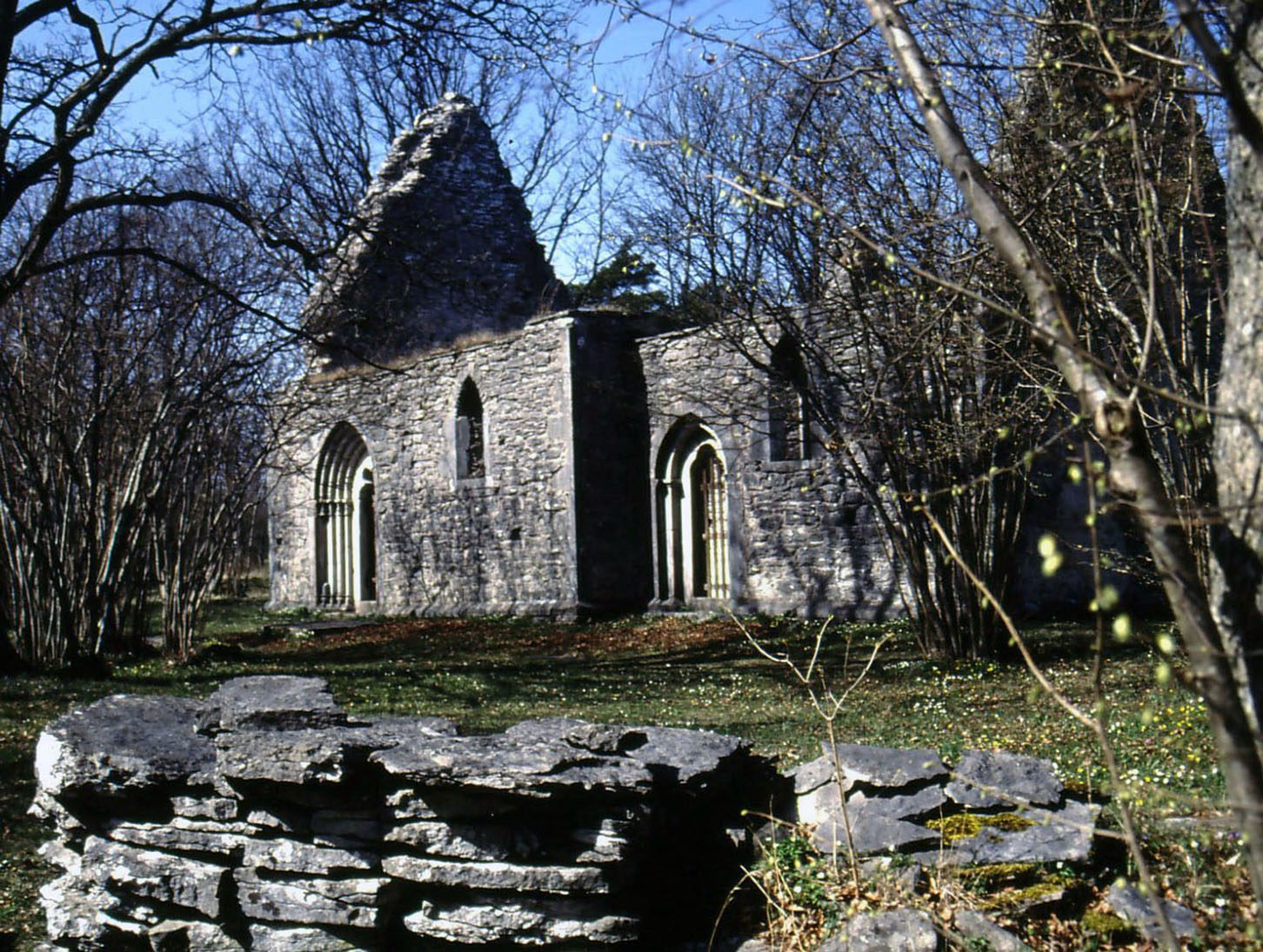|
Visby
Visby () is an urban areas in Sweden, urban area in Sweden and the seat of Gotland Municipality in Gotland County on the island of Gotland with 24,330 inhabitants . Visby is also the episcopal see for the Diocese of Visby. The Hanseatic League, Hanseatic city of Visby is arguably the best-preserved Middle Ages, medieval city in Scandinavia, and, since 1995, it has been on the UNESCO World Heritage Site list. Among the most notable historical remains are the long Visby City Wall, town wall that encircles the town center, and a List of church ruins on Gotland, number of church ruins. The decline as a Hanseatic city in the Late Middle Ages was the cause for many stone houses being preserved in their original medieval style. Visby is a popular vacation destination for Scandinavians during the summer and receives thousands of tourists every year. It is by far the most populous Swedish locality outside the Swedish mainland. The Campus Gotland, Gotland University is in Visby, and sinc ... [...More Info...] [...Related Items...] OR: [Wikipedia] [Google] [Baidu] |
Visby City Wall
Visby City Wall (, "Visby Ring Wall", sometimes ''Visby stadsmur'', "Visby City Wall") is a Middle Ages, medieval defensive wall surrounding the Swedish town of Visby on the island of Gotland. As the strongest, most extensive, and best preserved medieval city wall in Scandinavia, the wall forms an important and integral part of Visby World Heritage Site. Built in two stages during the 13th and 14th century, approximately of its original still stands. Of the 29 large and 22 smaller towers, 27 large and 9 small remain. A number of houses that predate the wall were incorporated within it during one of the two phases of construction. During the 18th century, fortifications were added to the wall in several places and some of the towers rebuilt to accommodate cannons. History The oldest part of the city wall is a defensive tower, today called the ''Kruttornet'' (the Gunpowder Tower), which was erected at the harbor entrance in the 12th century, making it the oldest surviving non-re ... [...More Info...] [...Related Items...] OR: [Wikipedia] [Google] [Baidu] |
Visby Cathedral
Visby Cathedral (), formally Visby Saint Mary's Cathedral (''Visby Sankta Maria domkyrka''), is a cathedral within the Church of Sweden, seat of the Diocese of Visby, Bishop of Visby. It lies in the centre of Visby, the main town on the Swedish island Gotland. It was built as the church of the German traders in the city during the 13th century. The first church was probably a wooden church, which was later replaced by a stone building. Originally built as a basilica, it was successively expanded and rebuilt during the Middle Ages. At the end of this period it had been transformed to a hall church, which it still is. In 1361, Gotland and the church became part of Denmark. Following the Reformation in Denmark–Norway and Holstein, Reformation, it was the only medieval church in the city left in use, and in 1572 raised to the status of cathedral. Since 1645 Gotland and the cathedral have been part of Sweden. A major renovation was carried out in 1899–1903 under the guidance of arc ... [...More Info...] [...Related Items...] OR: [Wikipedia] [Google] [Baidu] |
Gotland
Gotland (; ; ''Gutland'' in Gutnish), also historically spelled Gottland or Gothland (), is Sweden's largest island. It is also a Provinces of Sweden, province/Counties of Sweden, county (Swedish län), Municipalities of Sweden, municipality, and List of dioceses, deaneries and parishes of the Church of Sweden, diocese. The province includes the islands of Fårö and Gotska Sandön to the north, as well as the Karlsö Islands (Lilla Karlsö, Lilla and Stora Karlsö, Stora) to the west. The population is 61,023 (2024) of which about 23,600 live in Visby, the main town. Outside Visby, there are minor settlements and a mainly rural population. The island of Gotland and the other areas of the province of Gotland make up less than one percent of Sweden's total land area. The county formed by the archipelago is the second smallest by area and is the least populated in Sweden. In spite of the small size due to its narrow width, the driving distance between the furthermost points of the ... [...More Info...] [...Related Items...] OR: [Wikipedia] [Google] [Baidu] |
List Of Church Ruins On Gotland
There are nineteen known ruined churches on the Swedish island of Gotland, twelve of which lie in Visby, the island's main town. Of these, ten lie within the medieval City wall of Visby, city walls. Three additional church ruins in Visby are known through written sources, but today completely vanished. Gotland began to gradually abandon Norse religion and adopt Christianity during the 11th century. While the earliest church (building), churches were wooden, construction of stone churches began during the 12th century. The church building period was fairly short; in the countryside stone churches were erected between the early 12th and mid-14th centuries, while in Visby the last churches were inaugurated during the 15th century. Some of these churches have since fallen into ruin. Of the 94 medieval parish churches in the countryside, 91 are still in use. Three were abandoned following the Reformation in Denmark–Norway and Holstein, Reformation, when parishes were merged, and som ... [...More Info...] [...Related Items...] OR: [Wikipedia] [Google] [Baidu] |
Gotland Municipality
Region Gotland, legally Gotlands kommun ('), is a municipality with regional responsibilities that covers the entire island of Gotland in Sweden. The city of Visby is the municipality's seat. Gotland Municipality is the 39th most populous municipality in Sweden. The flag of the municipality is a red ram on a white background. History On 31 December 1951 there were 93 local government units on the island of Gotland, among them one city (Visby), one market town ( Slite), one county council and a lot of rural municipalities, many of them with fewer than 100 inhabitants. Twenty years later the situation was totally different. The first of the two nationwide local government reforms in Sweden during the 20th century was implemented on 1 January 1952. From that date on, the rural municipalities on the island were regrouped into twelve new enlarged municipalities, which together with Visby, Slite and the Gotland County Council formed the new administrative pattern. After ten years ... [...More Info...] [...Related Items...] OR: [Wikipedia] [Google] [Baidu] |
Diocese Of Visby
The Diocese of Visby () is a division of the Church of Sweden consisting of the island of Gotland. Its seat is Visby Cathedral located in the largest town on Gotland, Visby. The Bishop of Visby is also responsible for the episcopal oversight of the Church of Sweden Abroad (SKUT). Bishops of Visby *1572–1589 Moritz Christensen Glad (Mauritius Christiani Lætus) *1586–1591 Petrus Johannis (Peder Hansen Riber) *1592–1596 David Hansson Bilefeld *1597–1599 Povel Andersen (Paulus Andræ Medelby) *1600–1601 Willatz Sörensson (Willadius Severini) *1601–1613 Lauritz Nielsøn Helsinburgicus *1615–1624 Antonius Johannis Kolding (Anton Hansen Kolding) *1627–1631 Theodorus Erasmi (Thor Rasmussen) *1631–1644 Oluff Fock (Olavus Phocas Staphrophski) *1645–1656 Hans Nilssøn Strelow *1656–1657 Niels Lauritzen Wallensis Gardeus *1657–1676 Johannes Brodinus *1676–1679 Hans Nilsson Endislöv *1679–1685 Haquin Spegel *1685–1692 Petrus Stjernman *1692–1709 Israel ... [...More Info...] [...Related Items...] OR: [Wikipedia] [Google] [Baidu] |
Almedalen Week
The Almedalen Week (, ), also known as Politician's Week in Almedalen () is an annual event taking place in week 26 in and around Almedalen, a park in the city of Visby, Gotland, Sweden. With speeches, seminars and other political activities, it is considered to be the most important forum in Swedish politics. During the week, representatives from the major political parties in Sweden take turns to make speeches in Almedalen. It has inspired similar events to be held in other countries, like Suomi-Areena in Finland, Arendalsuka in Norway, Arvamusfestival in Estonia and Folkemødet at the island of Bornholm in Denmark. History The origin of the Almedalen Week was the speeches made by Olof Palme during several summers in Almedalen. He was in Visby because he and his family used to spend their summers at Fårö. It started with an improvised gathering that Palme, then education minister and candidate for the position of party leader for the Social Democratic party, and ... [...More Info...] [...Related Items...] OR: [Wikipedia] [Google] [Baidu] |
Hanseatic League
The Hanseatic League was a Middle Ages, medieval commercial and defensive network of merchant guilds and market towns in Central Europe, Central and Northern Europe, Northern Europe. Growing from a few Northern Germany, North German towns in the late 12th century, the League expanded between the 13th and 15th centuries and ultimately encompassed nearly 200 settlements across eight modern-day countries, ranging from Tallinn in Estonia in the east, Bergen (Bjørgvin) in Norway to the North to the Netherlands in the west, and extended inland as far as Cologne, Prussia (region), the Prussian regions and Kraków, Poland. The League began as a collection of loosely associated groups of German traders and towns aiming to expand their commercial interests, including protection against robbery. Over time, these arrangements evolved into the League, offering traders toll privileges and protection on affiliated territory and trade routes. Economic interdependence and familial connections am ... [...More Info...] [...Related Items...] OR: [Wikipedia] [Google] [Baidu] |
Almedalen
Almedalen (, ) is a park in the Swedish city of Visby on the island of Gotland. It is well known in Sweden as the central site of the annual Almedalen Week. In medieval times the area, just outside the city walls was the city harbour. Due to the post-glacial rebound, the port over time grew too shallow and a new one had to be constructed further away from the city where the sea is deeper. In the 19th century the area went by the name (Old Port). When the area was planted with elms in the 1870s, the name Almedalen was coined. In Sweden, the name Almedalen is generally associated with the Almedalen Week, an annual event in Visby which is an important meeting place for everyone involved in Swedish politics. During the week, which takes place during the 27th week of every year, representatives from the major political parties in Sweden take turns giving speeches in the park. The county library of Gotland, the conference centre Visby Strand (opened in April 2007), and Campus Gotl ... [...More Info...] [...Related Items...] OR: [Wikipedia] [Google] [Baidu] |
Gotland County
Gotland County () is a county or of Sweden. Gotland is located in the Baltic Sea to the east of Öland, and is the largest of Sweden's islands. Counties are usually sub-divided into municipalities, but Gotland County consists of only one county council, which also serves as a municipality, Region Gotland. Gotland County is the only county in Sweden that is not governed by a municipal council. The municipality handles the tasks that are otherwise handled by the county council: mainly health care and public transport. Like other counties, Gotland has a County Administrative Board, which oversees implementation of the Swedish state government. Both the County Administrative Board and the municipality have their seat in the largest city, Visby, with over 22,000 inhabitants. Princess Leonore, the daughter of Princess Madeleine, is Duchess of Gotland. Province The provinces of Sweden are no longer officially administrative units but are used in reporting population size, politics, ... [...More Info...] [...Related Items...] OR: [Wikipedia] [Google] [Baidu] |
Stad (Sweden)
(Swedish: ; plural ) is a Swedish term that historically was used for urban centers of various sizes. Since 1971, has no administrative or legal significance in Sweden. History The status of towns in Sweden was formerly granted by a royal charter, comparable to the United Kingdom's status of borough or burgh before the 1970s or city status today. Unless given such town privileges, a municipality could not call itself . To receive the privileges, there were several requirements a municipality needed to fulfill, like being of a certain size, and to have certain facilities. The criteria varied over time as they were at the discretion of the Riksdag or the monarch, but they could include a permanent town council hall and a prison. In the majority of cases, before a town received its charter, it would have previously been given the status of '' köping'' or "merchant town". Exceptions to this would be when a town was founded under Royal supervision, in which case it would ofte ... [...More Info...] [...Related Items...] OR: [Wikipedia] [Google] [Baidu] |
Gutasaga
Gutasaga (''Gutasagan'') is a saga regarding the history of Gotland before its Christianization. It was recorded in the 13th century and survives in only a single manuscript, the Codex Holm. B 64, dating to , kept at the National Library of Sweden in Stockholm together with the Gutalagen, Gutalag, the legal code of Gotland. It was written in the Old Gutnish language, a variety of Old Norse. Contents A local creation myth The saga begins with Gotland being discovered by a man named Þieluar (Swedish language, Swedish: Tjälvar, Gutnish: ''Tjelvar''). Gotland is under a spell and under water during the day and out of water only during the night, a spell that is broken by Þieluar lighting a fire on the island. Þieluar had a son named Hafþi (Swedish: Hafþi), who married a woman named Hwitastierna (Swedish: Vitastjärna; English: White-star). After Hafþi's and Hwitastierna's first night together, she has a dream about three snakes entwined in her bosom. Hafþi interprets her dream ... [...More Info...] [...Related Items...] OR: [Wikipedia] [Google] [Baidu] |





